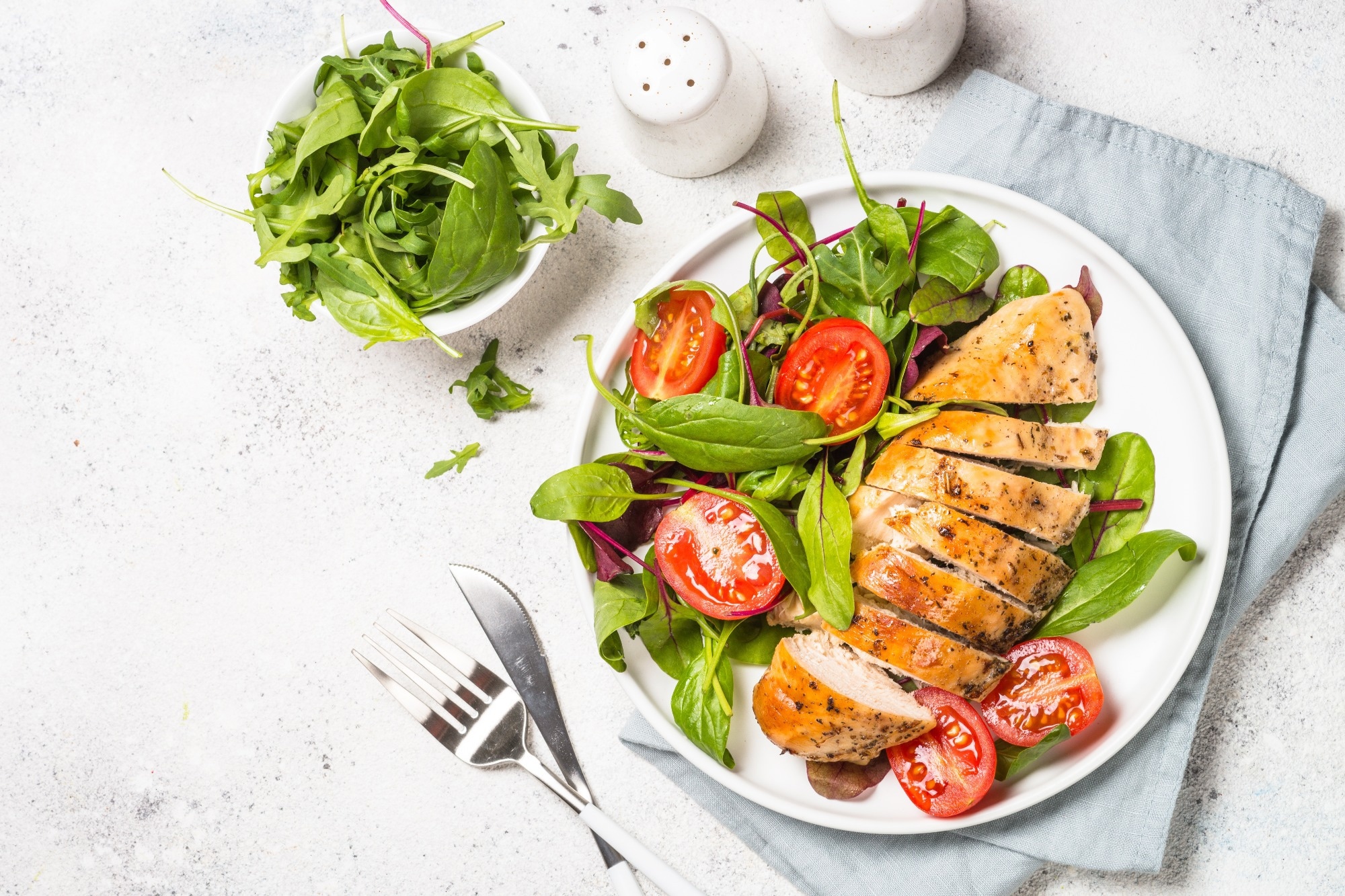Specifically, they tested three food characteristics: energy density (kcal/g), level of processing per the NOVA classification system, and carbohydrate-to-fat (CF) ratio.
 Study: Evidence that carbohydrate-to-fat ratio and taste, but not energy density or NOVA level of processing, are determinants of food liking and food reward. Image Credit: nadianb/Shutterstock.com
Study: Evidence that carbohydrate-to-fat ratio and taste, but not energy density or NOVA level of processing, are determinants of food liking and food reward. Image Credit: nadianb/Shutterstock.com
Background
Scientific literature finds food palatability, liking or taste pleasantness to the mouth, as an influence on human energy intake and body weight via its contribution to food reward.
However, the know-how of the characteristics of food that determine food palatability and the importance of energy density in satiety and food intake is limited.
About the study
In this online study, researchers created three study arms based on energy density, level of processing, and CF ratio, each with a unique study survey link.
The energy density arm had 32 foods, divided into low, low-medium, medium-high, and high energy density foods, and there were 24 foods in the level of processing arm categorized into unprocessed & minimally processed, processed, and ultra-processed foods.
The CF ratio arm had 24 foods further divided into foods containing a high ratio of carbohydrates, a similar ratio of carbohydrate and fat, and a high-fat ratio.
All recruited participants were adults (≥18 years), not vegetarian or vegan, and familiar with the foods assessed in the study. They evaluated a set of foods on five dependent variables and rated their familiarity with each food in each study arm.
For instance, they considered food reward as the ‘momentary value of a food to an individual’ based on their desire to eat a particular food.
They displayed various foods as high-quality color images and asked participants to make their judgments based on imagined consumption of these foods.
Results
There were 73, 72, and 79 participants in the energy density, level of processing, and CF ratio study arms, respectively. As hypothesized, energy-dense foods were the most liked and valued in the energy-density arm.
The liking and reward value of foods containing similar amounts of carbohydrate and fat (combo) was greater than foods of equal energy density but containing either of these.
However, contrary to their hypothesis, they noted that their liking for ultra-processed foods did not exceed that of processed foods, and even their reward value was lower than that of processed foods.
Accordingly, the mean wanting scores for ultra-processed foods were significantly lower than for processed, minimally processed, and unprocessed foods.
Analyzing food reward, liking, and taste intensity of 52 different foods revealed that food reward was unrelated to energy density but varied markedly with the processing and CF ratio levels. Results for liking were similar to those for food reward, but those for the level of processing did not closely parallel the results for liking.
Furthermore, taste intensity (average ratings of sweetness, saltiness, and flavor intensity) varied markedly by food category in all three study arms.
However, there were minimal differences in the CF ratio arm. It also varied with the level of processing, with higher intensity for processed and ultra-processed foods compared to unprocessed and minimally processed foods.
Bivariate analysis confirmed a positive relationship between food reward and liking with taste intensity and CF ratio and a negative relationship with fiber content. The results for fiber were unanticipated and required adjusting the level of statistical significance, but the correlations remained significant.
Regression analyses confirmed that energy density did not have a relationship with food reward or liking.
However, there was a high correlation between food reward and liking across foods, with the model favoring that liking and hunger independently determined food reward.
Conclusions
This study, advertised as ‘the food rating study,’ contributed substantially to the scientific understanding of food likes and dislikes and presented several novel results.
It showed that foods combining equal amounts of carbohydrate and fat (combo) foods were liked (pleasant tasting) and more desired. In contrast to widespread assumptions, foods with higher energy density and levels of processing were not rated better tasting or more desirable.
Second, the results showed that the CF ratio, taste intensity, and fiber content together accounted for a 56% and 43% variance in food liking and food reward, implying that the energy-to-satiety ratio is relatively high for combo foods and relatively low for high-fiber foods.
Most importantly, the results did not support the claim that ultra-processed foods are hyper-palatable.
Future studies might validate the concept of energy-to-satiety ratio as a determinant of food liking and, in turn, food reward, given its significant potential to further the understanding of food choices and controlling calorie intake and inform strategies for preventing obesity.